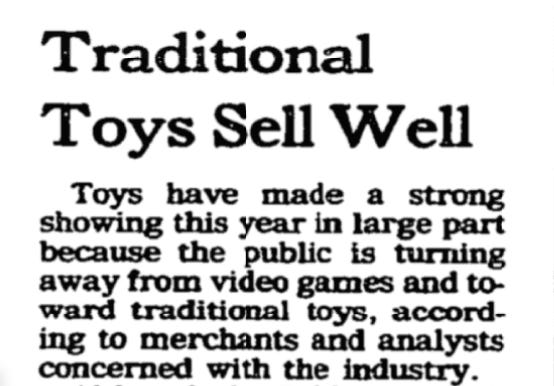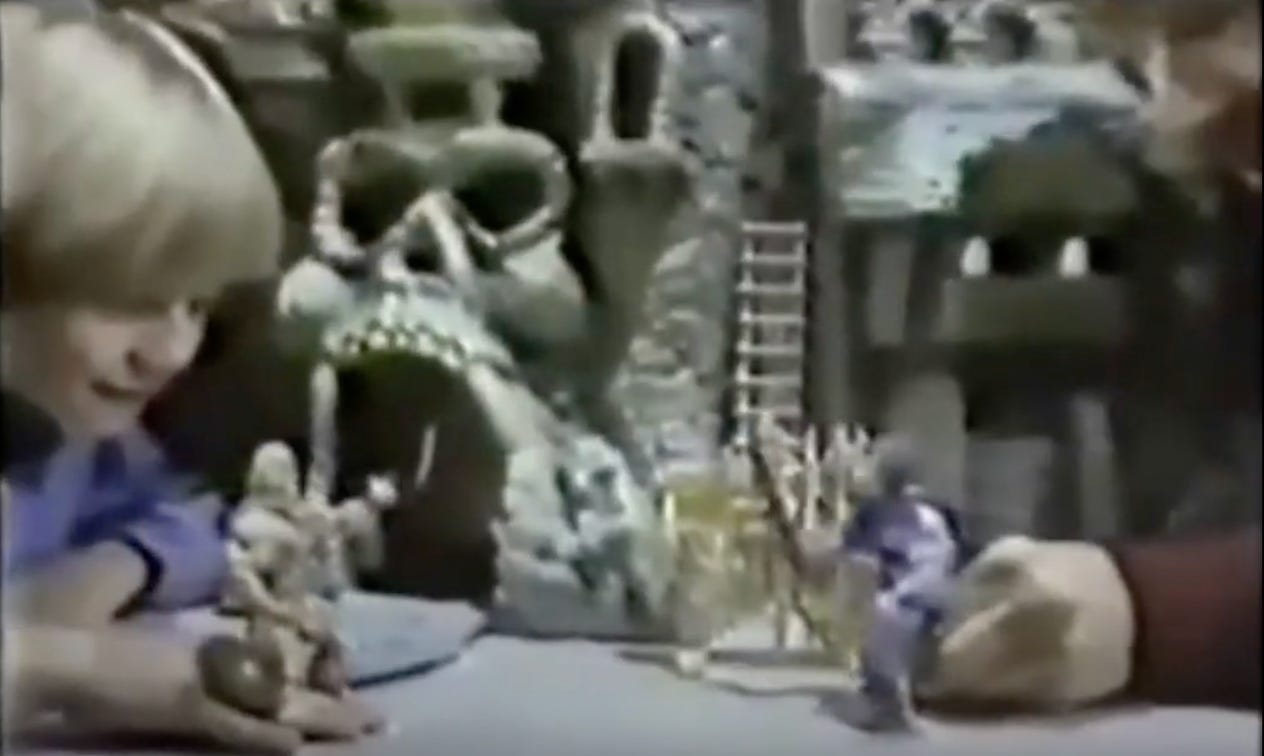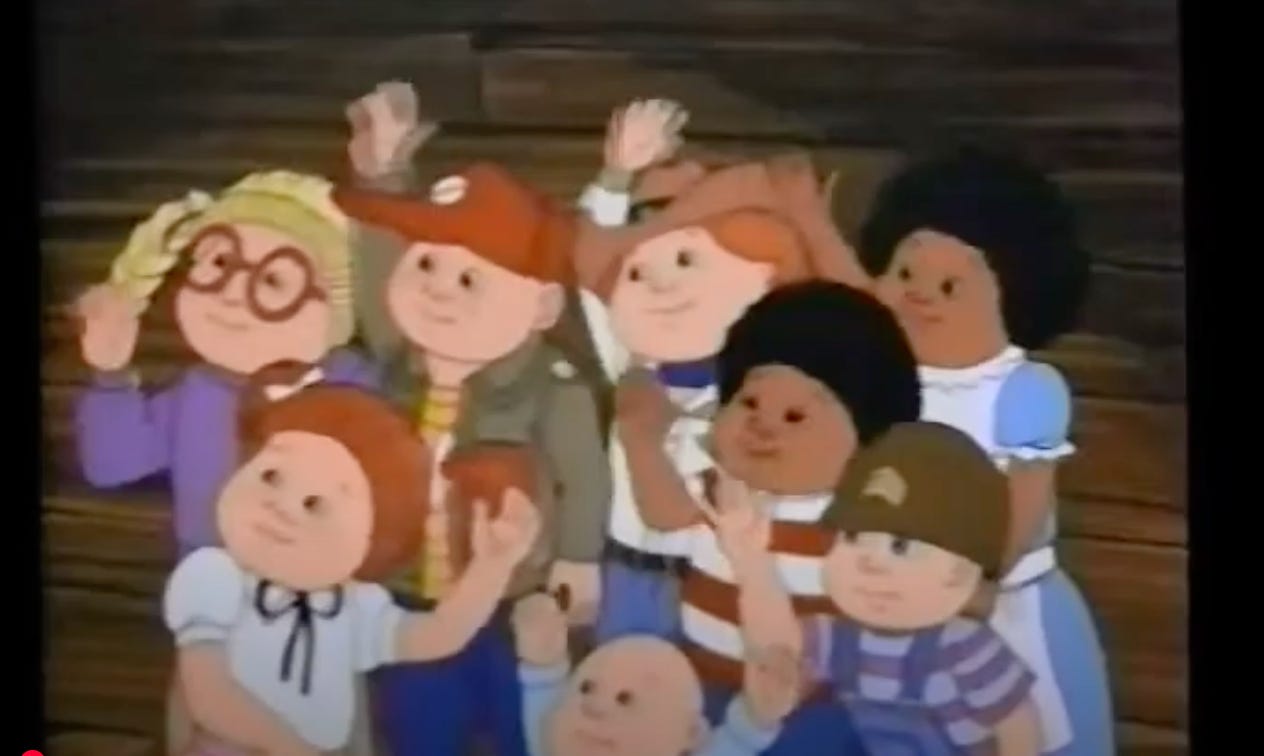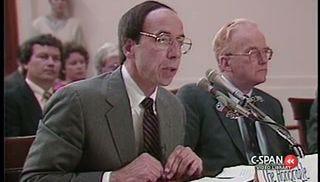A toaster with pictures
December 13, 1984: Gen X children all get the same thing for Christmas; the FCC invents TV Toys and christens conservative radio; Family Ties clearly has no female writers
Christmas 1984 is approaching. You need to find presents for some kids, because that’s what Christmas is now, yay. You’re feeling a little wary, because there were two painful events last year, in 1983, both of which still merit their own Wikipedia pages:
The Video Game Crash of 1983 — video consoles and games oversaturated the market, the Activision anti-trust revolution opened the gates for third-party companies to start releasing a deluge of awful games, and the nascent personal computer market made people wonder, why don’t I just play games on my Commodore 64?
As a telling anecdote, Atari produced 5 million copies of the E.T. game, renowned as the worst video game ever. It ended up burying hundreds of thousands of cartridges in a landfill in New Mexico. It’s called the Atari Video Game Burial. There’s a whole documentary.
Once the landfill secret was revealed, a layer of concrete was poured over the site. For the children. “There are dead animals down there,” said a landfill worker, “We wouldn’t want any children to get hurt digging in the dump.”
Industrywide, video game console and cartridge revenue in 1983 was $3.2 billion. In 1985 it was $100 million. A 97% drop.
So…for your grandkid? Ataris are out. And then…
The Cabbage Patch Riots of 1983 — A tide of grown people in their winter coats, pouring into a just-opened store, elbowing each other in the eyes for some great holy grail item that will legitimize their parenting forever. You’ve probably seen such videos, it’s now an annual Black Friday tradition. But The Cabbage Patch riots —this was when we first learned how to do it.
There was violence. 5,000 people mobbed a Hills department store in Charleston, WV. A woman’s leg was broken in a surge of 1,000 people at a Zayre store in Pennsylvania. There was scarcity. Chartered planes full of product from Hong Kong. There were weapons. A store manager wielded a baseball bat to defend himself.
We return to 1984 now, and your scars have healed from these toy debacles. This week The New York Times says we are preferring “traditional” toys.
So what are the top-selling, must-have toys this year? Well, Cabbage Patch Kids are still on the list - they banked $2B in revenue in 1984. But now there are popular, less ugly, options.
The top-selling toys of 1984 need no introduction, but here goes:
Transformers — a Hasbro toy family that debuted this year
He-Man and Masters of the Universe — a Mattel toy family
G.I. Joe — a classic Hasbro kids’ action figure with a resurgence in the early ‘80s
My Little Pony — also Hasbro, cute little ponies with attitudes, launched in 1982
Rainbow Brite — invented by Hallmark Cards, with Mattel dolls launched in 1984
Care Bears — also born as a greeting card franchise, plush toys were also launched in 1982
Huge toy franchises. Even today, forty years later, you can still buy all of this crap!
But wait. This was way before the internet. When “Share” meant handing something to someone. When the only thing you could “Like” was an actual thing that you bought. When “Viral” meant, well…VIRAL.
So how did we communicate about the must-haves? How did a good parent know that they were required to sit in the cold at 5AM and trample their neighbors to snatch the last Optimus Prime?
Did we write each other letters? Did we have phone trees? Was there some sort of bulletin board in the town square? How did we know, dammit?
The answer: CARTOONS.
Transformers? Hasbro and Marvel combined to produce the first Transformers animated TV series, which debuted in September 1984
He-Man? His animated series ran from 1983-1985, primarily to sell the associated Mattel toy line that launched in 1982. The ads for the toys appeared in its commercial breaks, for extra confusion! Filmation made both.
G.I. Joe? His animated series, G.I. Joe: A Real American Hero, was also a Marvel-Hasbro collaboration, debuting in 1983 to support a rebooted line of action figures launched in 1982
My Little Pony? Their first animated special, Rescue at Midnight Castle, with voices of Tony Randall and Sandy Duncan, aired in 1984. Also Hasbro-Marvel!
Rainbow Brite? Her TV series, animated in Japan, debuted in 1984. A feature film, released in 1985, would earn the coveted 0% on Rotten Tomatoes.
Care Bears? Their first animated show, The Care Bears in the Land Without Feelings, aired in 1983, and The Care Bears Battle the Freeze Machine aired in 1984
And on December 7, 1984, the night after our previous Family Ties episode, the top-rated show on TV was The Cabbage Patch Kids First Christmas on ABC.
OK, so why was this suddenly happening in 1984? What was the magic? What explains this new coincidence of profitable toys that also have popular children’s shows, which look just like ads for the profitable toys? Why is Marvel in Hasbro’s office?
Let’s start here: In 1974, FCC banned something called PLCs. PLCs were program-length-commercials, defined as a show clearly created to sell a product or toy. The rationale was that kids can’t tell the difference between a show and an ad. Shows like He-Man were flat-out prohibited.
And there were more restrictions. Broadcasters had to air “educational” programming for a certain amount of time. And there were limits to how many commercials they could air per hour.
But then, in his first term, Reagan appointed Mark S. Fowler as FCC Chairman. Fowler believed that government had no right to regulate broadcasting at all. His famous quote was “a television is just another appliance — it’s a toaster with pictures.”
In 1984, our favorite year, Fowler declared that the FCC would stop distinguishing educational programming or advertising from regular programming. It eliminated the restriction on PLCs, stopped counting ad minutes, and removed all requirements to air public service programming.
Let the 30-minute toy ads begin! If you think the best way to educate a child is to sell them something, who are we to dissuade you? The free market, Fowler believed, will take care of our children.
This is the reason that all of Gen X has the same toys in Mom’s attic. Star Wars had shown us what tie-in merch could do, but it took the FCC to invent the “franchise” concept, and as kids, we were the open frontier.
Notably, Fowler’s FCC did far more than just change children’s programming. Prior to Reagan, the FCC had also enforced rules about politics and public information. A key example is The Fairness Doctrine, introduced in 1949 before TV was in color. It *required* broadcasters to:
Air coverage of controversial issues in the public interest
Present contrasting viewpoints on those issues, all of them
Every licensed broadcaster in radio and television HAD to do this. It seems naive in retrospect, but the idea was to keep every channel…neutral. And therefore, “fair.”
Fowler blew it all up. His FCC stopped enforcing the Fairness Doctrine, using the First Amendment as the rationale. He said it’s unconstitutional to make a broadcaster air anything they didn’t want to air. Except saying f*ck. You still can’t say f*ck.
In 1987, Congress tried to protect the Fairness Doctrine by writing it into law, but Reagan vetoed the bill. The Fairness Doctrine was repealed.
That changed broadcasting almost immediately.
Rush Limbaugh’s radio show launched the following year, in 1988. Before the repeal, in order to air Rush Limbaugh’s show you would have been federally required to slot an equivalent 3 hours a day(!) to a host who’s the opposite of Rush Limbaugh. Which as we all have learned, does not exist.

Before Fowler, these rules had been strictly enforced. In 1971 the DC circuit court ruled that, per the Fairness Doctrine, if a station aired cigarette ads it would be required to air an equivalent number of minutes of anti-smoking spots and programming. And nobody wanted that. So the ads stopped.
And everyone stopped smoking!
The FCC’s original purpose was born of physics. And scarcity. Scarcity of the electromagnetic spectrum. The useable range of frequencies in the spectrum was finite, so the spectrum was considered a “public good” that should be used in the public interest. The spectrum was divided into 6MHz chunks, and each one was made a TV “channel.”
For those interested in even deeper dives, this chart is fun to zoom and browse. OK, not “fun,” but still. It’s a map of all the spectrum’s frequencies and it uses.

If each region of the US could only accommodate one channel per frequency, the government wanted to prevent these precious slots from being monopolized and co-opted to mislead the public one way or another.
But that’s gone now.
The FCC rules only applied to “over the air” broadcasts, not cable TV. And aren’t those quaint? You may remember UHF TV, all the channels on the “other dial.” Today, every channel over 36 is used by phone carriers for voice and text messages. What was once Channel 55-WBNX in Akron, OH is now Verizon LTE. Now you can say f*ck all you want!
Family Ties, S1E13: Karen 11, Alex 0
Remember Karen, the hapless housekeeper played by Geena Davis? Here we get a second Karen episode, with her ridiculous back story. But at least we’ll truly understand her. Our greatest wish.
The big dance
The family is in the kitchen, eating Karen’s terrible eggs. ALEX is awaiting a phone call from Suzy Farkas. She’s his date for a fraternity dance. (Remember, Alex is somehow a college student through this season). Most important, she’s super HOT. As a potential pledge, Alex was eager to impress the frat boys. Spoiler: You will not meet Suzy
MALLORY: I heard the Alpha guys are just a bunch of rich, snobby kids. All they care about is status, success, and money.
ALEX [scoffs]: That’s exactly why I’m excited!
Nerrrrds
ALEX goes to the frat house to meet DON and CRAIG, the “Alpha Men.” The premise is a straight-up ripoff of the movie Revenge of the Nerds, released in Summer ‘84 and still in our consciousness. Alex meets another recruit, PETEY, who is typecast, dressed, and written as a ROTN “nerd.”
Meanwhile, the frat boys are a familiar type of awful bro that only happened in the ‘80s. Eighties preppy sweaters, ‘80s slicked hair, arrogant ‘80s snarl, and snobby disgust. The ROTN frat was “Alpha Beta”. The FT frat was “Alphi Phi Epsilon.”
Alex wanted to BE them. He described the hot date he was bringing to the dance.
He also met MCCALL, Leland U.’s Dean of Students, a former Alpha Man. When told that Alex was a promising prospect, the very first thing he asked was “Any word on what his date looks like?” A grown man said that!
Plan B?
Back home, ALEX tells his family, “The only thing standing between me and that fraternity is the right suit and the quality of my date.”
The phone rings. It’s Suzy Farkas. Alex greets her warmly with:
ALEX: Hey Susie. How’s your diet coming? [covers phone to brag to DAD] She’s down to 107 pounds!
DAD: When she gets to 100, sell.
But Suzy cancels the date. She broke her leg skating. Alex is devastated. For himself.
KAREN walks in. Alex asks her to fill in and go to the dance. Karen says no, repeatedly and adamantly. She just can’t.
Dance night
ALEX is all dressed up and dateless. He begs Karen again, looking way way up to her with puppy dog eyes. Nope. He’s gonna have to go alone. And what is a college freshman without a super hot date? Right, nothing!
At the dance, the FRAT BOYS greet him, naturally, with probing questions about his date. Where is she?
As he tries to make an excuse, KAREN walks in. She gives him the weirdest kiss, holding his chin from around the back of his head. Y’know, like we did it in the ‘80s. In gratitude and relief, he burrows his head in her breasts, at his nose level.
The big reveal happens quickly. Turns out DEAN MCCALL and Karen had recently ended an affair. Sitcoms have a very small world. He says “I still love you” and pleads with her embarrassingly, in front of the whole party. He’s the dean! It’s really pathetic.
She quits
KAREN comes home to DAD in the kitchen. She quits the job.
She explains thusly: She grew up very rich. She never had to cook or clean anything in her life. After college she had “no interest in a career of any kind.” So she got bored and fell in love with McCall, a much older man who soon went back to his wife.
Dejected, she lived off her trust fund for a while, but her payments ran out, so she applied for the Keaton job, even though she didn’t know how to cook or clean.
Make sense?
It did to the Keatons. Goodbye, Karen! Alex doesn’t like the Alpha Men anymore. Everything is fine now.








